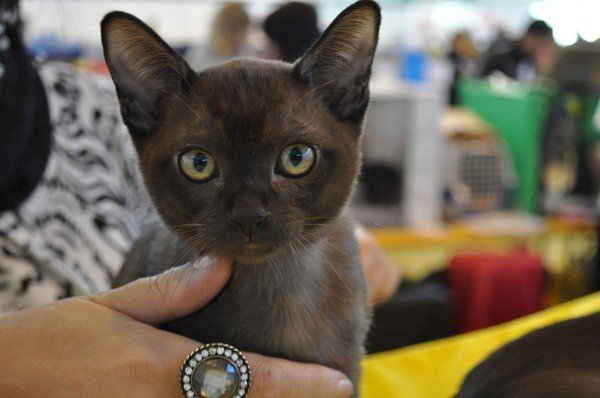
Allergy to Burmese Cats
It’s a fact that 2-15% of people suffer from cat allergies. This is a significant reason why animals are often given to shelters. When buying a cat from the “Via Emilia” cattery, the first concern should be whether the person has an allergy to Burmese cats.
Burmese Cats and Allergies
Burmese cats are considered hypoallergenic. This doesn’t mean that allergy and Burmese cats are incompatible. The prefix “hypo” means “less.” When breeders refer to hypoallergenicity, they indicate that the breed is less likely to cause unpleasant symptoms but doesn’t guarantee their absence.
Are Burmese Cats Allergenic?
Yes, but the likelihood of triggering an allergic reaction is low. The lack of an undercoat and minimal shedding make them convenient for home living, but there is no guarantee of no allergic reactions.

Where Does the Allergy Come From?
The primary cause of an allergic reaction is not the animal’s fur but a specific protein called Fel d1, produced by the sebaceous glands. It is found in the skin, saliva, and urine. When grooming, the cat spreads this protein onto its fur, which then disperses throughout the home, onto furniture, and surfaces. Allergens can persist from six months to four years.
All breeds produce the Fel d1 protein, but some, like Burmese cats, produce less. This makes them one of the safer choices for people with hypersensitivity.
Symptoms of Allergies
The intensity of symptoms depends on the individual’s sensitivity. These include:
- Throat irritation, coughing
- Redness of the eyes, tearing
- Sneezing
- Nasal congestion, runny nose
- Skin itching, rashes
These symptoms can easily be mistaken for illnesses like the flu or a cold. Before blaming the cat for a family member’s heightened sensitivity, it’s important to treat the symptoms with appropriate medications. If the symptoms persist and occur frequently, the best solution is to visit a doctor and get tested. Sometimes, the cause of the poor health might be food allergens.
Interesting Facts
- More than 50% of people with cat allergies experience symptoms a few weeks after bringing the cat home.
- Over time, the reaction to the cat may decrease and can be easily managed with desensitizing medications, without the need for special treatment.
- Male cats are more allergenic than females. Neutering can help reduce allergens.
- Kittens cause less of a skin reaction than adult cats.
- Dark-colored cats are four times more allergenic than light-colored cats – this applies to all cat breeds.
Due to their hypoallergenic nature, Burmese cats are ideal for people with mild allergies. These animals produce less of the specific protein that causes allergic reactions, and they shed minimally. However, it’s advisable for severe allergy sufferers to avoid getting a Burmese cat to prevent health issues.







